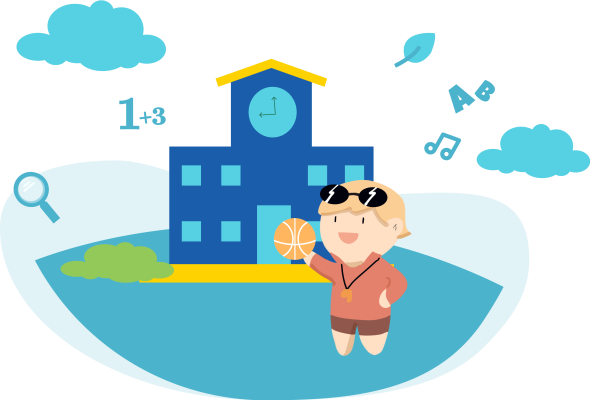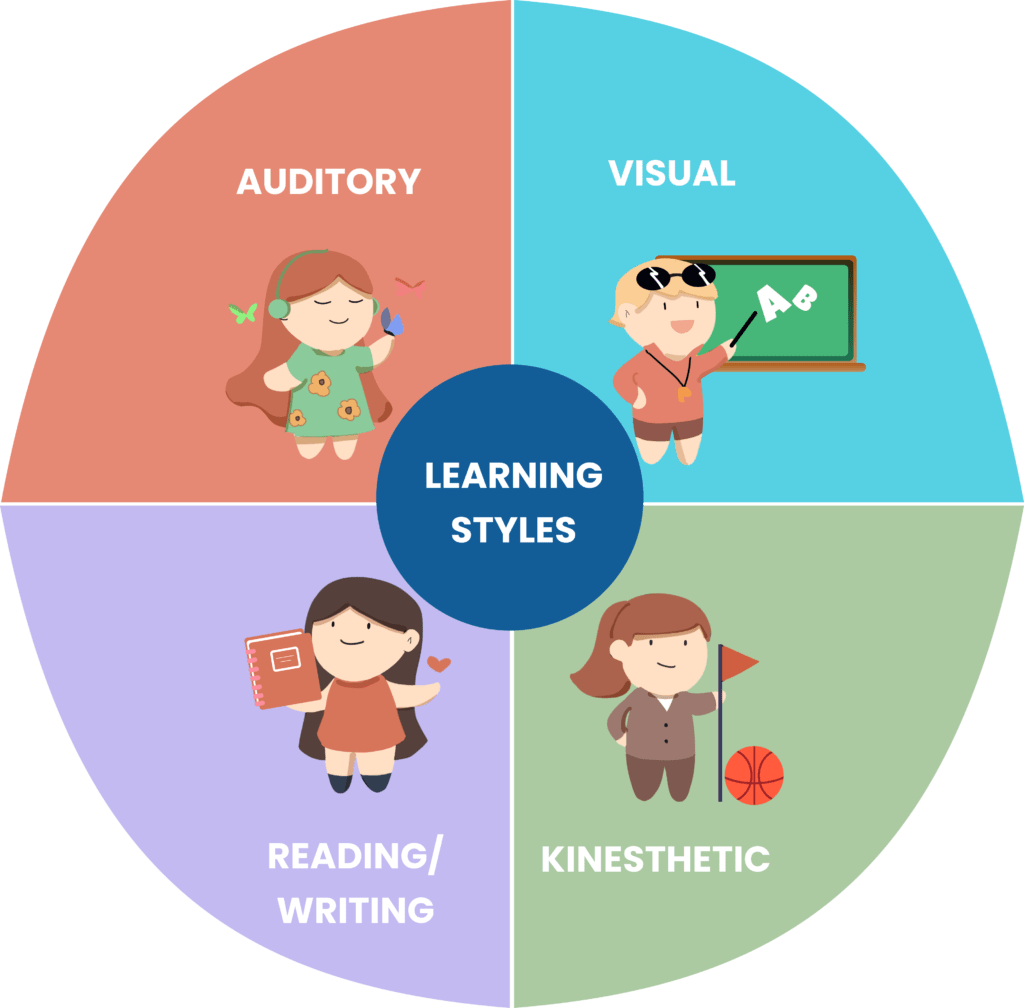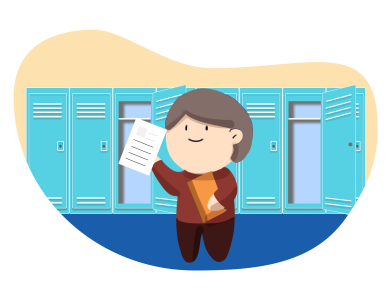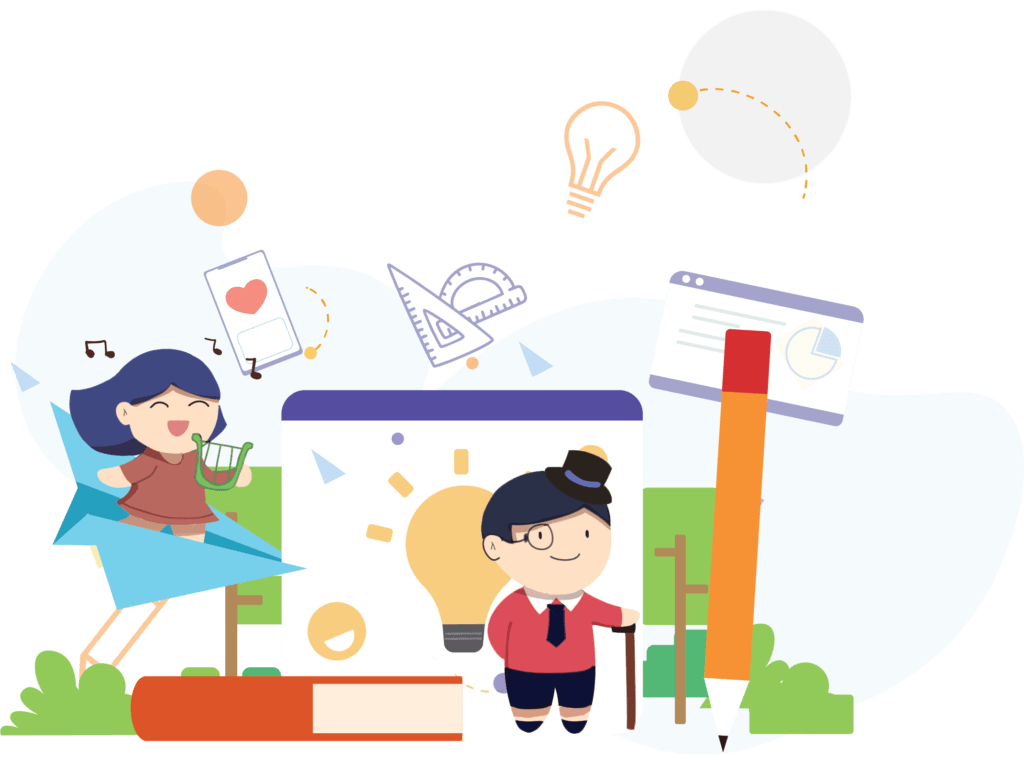What is Multiple Intelligence?
People usually use the word “intelligence” to describe a person’s natural intellectual ability, which is thought to be set at birth, measurable, and hard to improve. But in 1983, Harvard psychologist Howard Gardner came up with the idea of multiple intelligences to help teachers, psychologists, and parents understand how children think and how they learn in different ways.
The IQ test was once considered the “gold standard” for determining a child’s ability, but this research has shown that it may not be the most accurate indicator of future success. If the child is not artistic, it doesn’t imply that they can’t socialize or be good at music.
This theory says that there are eight different kinds of intelligence: spatial intelligence, linguistic intelligence, musical intelligence, mathematical intelligence, interpersonal intelligence, intrapersonal intelligence, naturalistic intelligence, and kinesthetic intelligence.
1. Spatial Intelligence – People with this skill set typically have a sense for navigation and are comfortable using various visual aids including maps, charts, films, and photos.
- Easily understand the maps, charts, and pictures.
- Skilled at drawing, painting, and doodling.
- Easily Solve Puzzle Games!
2. Linguistic Intelligence – These people usually have exceptional memorization, writing, and reading skills.
- Enjoy to read and write.
- Excellent in Speech Performance
- Can easily learn a foreign language.
3. Mathematical Intelligence – These people have computing skills; are able to handle a wide variety of problems using logic; are able to recognize and understand numerical patterns and correlations between actions and symbols.
- Can solve difficult computations.
- Good at Problem Solving
- Enjoys Strategy Games.
- Excellent at Scientific Experiments
4. Musical Intelligence – These people are musically intelligent and have a natural ability to visualize ideas in terms of chord changes, rhythmic patterns, and other musical concepts. One of their many strengths is their ability to create and perform original songs.
- Love to sing
- They enjoy playing musical instruments.
- Understand Rhythm Patterns, Music Structures, Notes
- Ability to Compose a Song
5. Interpersonal Intelligence – People who score high on the “interpersonal intelligence” scale are those who are skilled communicators, have a deep understanding of others, and work well in teams. They are sensitive to the moods, emotions, and personalities of others around them.
- Enjoy to Socialize with other people.
- Have good communication skills.
- Understand other people’s situations
- Good Leader
- Street-smart
6. Intrapersonal Intelligence – The state of being conscious of and in touch with one’s own emotions, values, beliefs, and ways of thinking. They find delight in introspective activities like daydreaming, examining their interpersonal connections, and reflecting on their own abilities.
- Self-Awareness
- They are aware of their own strengths and weaknesses.
- Independent
7. Naturalistic Intelligence – Possessing the ability to recognize, observe, classify, and understand individual elements of nature (including plants, wildlife, the surroundings, etc.).
- Have fun hiking and camping.
- Enjoy going to the zoo and science museum.
- Enjoy exploring nature.
- Interested in subjects like biology, astronomy, meteorology, or zoology.
8. Kinesthetic Intelligence – People who score highly on the bodily-kinesthetic intelligence test are viewed as excellent at motor skills, action performance, and physical management.
- Excellent Dancing Abilities
- Enjoy different sports.
- Enjoy participating in physical activities.
- They love making stuff with their own hands.
How Teachers Can Help Students By Understanding Multiple Intelligences
Gardner’s Multiple Intelligence Theory and how it relates to different learning styles can help educators better accommodate students. It is useful because it allows them to consider the wide variety of possible intelligence. Understanding multiple intelligences and different ways to teach can help all students learn more.
These types of intelligence differ from one another. Therefore, a child can excel in one area of intelligence while struggling in another. Because of this, teachers need to use ways to teach that appeal to a wide range of intelligences so that every student can do well in school.
Learning preferences may also vary from student to student; some learn through visual presentations, some learn through hearing, and others learn through hands-on experience. These four learning types may help educators accommodate the different learning preferences of students:
- Visual learners – students who benefit greatly from the use of visual aids such as pictures, charts, and diagrams.
- Teachers can use images, charts, and graphs that are related to the topic being discussed to cater to this type of learner.
- Allow students to create illustrations or drawings related to the lesson being taught.
- Auditory learners are individuals that retain more information when they hear it orally.
- For this type of learner, it is important that teachers clarify the words they speak.
- Teachers can use videos or music to cater to these students.
- Teachers can have group discussions so that people who learn best by listening and talking can fully understand what is being taught.
- Kinesthetic Learners—Students who learn best through doing, feeling, and experiencing.
- Teachers can conduct physical activities inside the classroom that are related to the topic.
- Provide activities such as acting or dancing.
- Reading/writing Learners – often prefer to acquire new information in written form or learn best from books. This is the easiest way to help students since it’s like the traditional method of the educational system.
- Teachers should have learning materials like books and handouts.
- Conduct writing activities like essays or research.
How Parents can Practice Multiple Intelligence at Home
Every child is special and has their own set of skills, passions, and preferences. They are unique; maybe yours is a bookworm and a dancer, while another kid is an animal lover and a science genius. That’s why it is important for parents to engage their children in different activities to learn about their interests and help them become passionate about something.
However, how do you determine your kids’ strengths? Here are some things you may do with your kids at home to encourage them to develop their multiple intelligences:
Spatial Intelligence
- Solve puzzles with them.
- Draw and paint something together.
- Explore maps
Linguistic Intelligence
- Spend time reading a book aloud.
- Watch movies or videos that use different languages.
- Ask them to share what they’ve learned with you through storytelling.
Mathematical Intelligence
- Play games like chess and sudoku puzzles.
- Challenge them with addition and subtraction problems.
- Play Riddles for a brain workout
- Conduct a simple science experiment.
Musical Intelligence
- Listen to music together from different genres.
- Try composing a song.
- Play musical instruments with them.
- Try to make sounds from different objects.
Interpersonal Intelligence
- Let your child make friends with the neighbors.
- Make them the activity leaders.
- Get their opinions or ideas on something.
Intrapersonal Intelligence
- Make them write a daily journal about their experiences each day.
- Talk to them about emotions and feelings.
- Encourage them to try exercises like yoga and meditation.
Naturalistic Intelligence
- Spend time exploring nature in your backyard.
- Plant trees or vegetables with them.
- Read books about nature and animals.
- Watch the moon and stars at night.
Kinesthetic Intelligence
- Dance every morning as part of morning exercise
- Encourage them to do role-playing with the family.
- Play different sports.
Teachers and parents who have an understanding of different intelligences can provide their students with a more well-rounded educational experience. Students will be more engaged, productive, and interested in studying, and it will make the educational process more enjoyable and fruitful.








